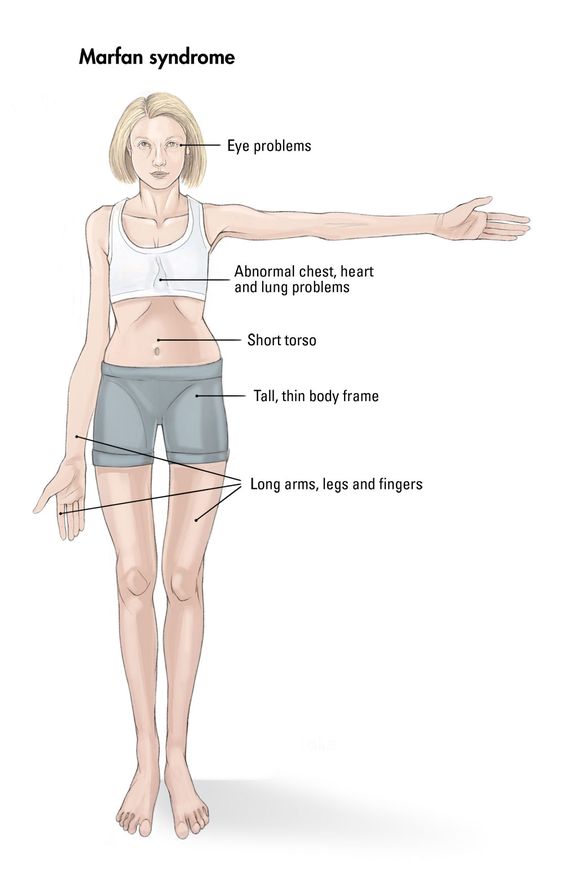Introduction
Marfan syndrome is a genetic disorder that affects the body’s connective tissue. Connective tissue is found throughout the body and provides strength and flexibility to structures such as bones, ligaments, muscles, blood vessels, and heart valves.

People with Marfan syndrome have a defect in the gene that makes fibrillin, a protein that is essential for the formation of connective tissue. This defect results in weakened connective tissue that can cause a variety of problems throughout the body.
Marfan syndrome is relatively rare, affecting about 1 in 5,000 people. It affects men, women, and people of all ethnic backgrounds equally.
Causes of Marfan Syndrome
Marfan syndrome is caused by a mutation in the gene that makes fibrillin-1, a protein that is essential for the formation of connective tissue. This mutation is usually inherited from a parent, but it can also occur spontaneously.
Symptoms of Marfan Syndrome
The symptoms of Marfan syndrome vary widely from person to person. Some people have only mild symptoms, while others have severe, life-threatening complications.
The most common symptoms of Marfan syndrome include:
- Tall and slender build: People with Marfan syndrome tend to be taller than average and have long arms, legs, and fingers.
- Scoliosis: Curvature of the spine is common in people with Marfan syndrome.
- Chest deformities: The breastbone may protrude outward or inward.
- Flat feet: The arches of the feet may be flattened.
- Nearsightedness: Difficulty seeing objects that are far away is common in people with Marfan syndrome.
- Heart problems: The aorta, the large blood vessel that carries blood from the heart to the body, can be weakened in people with Marfan syndrome. This can lead to an aneurysm, a bulge in the aorta that can rupture and cause life-threatening bleeding.
- Joint problems: People with Marfan syndrome may have loose joints, which can lead to pain and dislocations.
Diagnosis of Marfan Syndrome
There is no single test to diagnose Marfan syndrome. A diagnosis is usually made based on a person’s medical history, physical examination, and genetic testing.
Treatment for Marfan Syndrome
There is no cure for Marfan syndrome, but there are treatments that can help manage the symptoms and prevent complications.
Treatment for Marfan syndrome may include:
- Medications to lower blood pressure and reduce the strain on the aorta.
- Surgery to repair or replace the aorta or other affected organs.
- Physical therapy to help maintain joint flexibility and strength.
- Bracing to support the spine and prevent scoliosis from worsening.
- Eyeglasses or contact lenses to correct vision problems.
Living with Marfan Syndrome
Living with Marfan syndrome can be challenging, but there are ways to manage the condition and live a full and productive life.
Early diagnosis and treatment are essential for preventing serious complications. People with Marfan syndrome should see their doctor regularly for check-ups and monitoring.
With proper medical care and lifestyle modifications, people with Marfan syndrome can lead long and healthy lives.

.jpg)